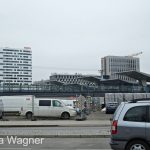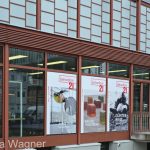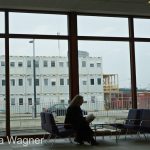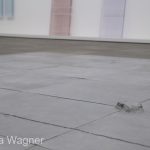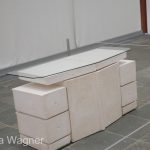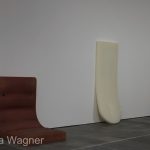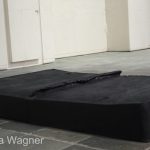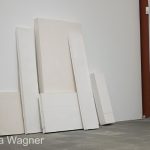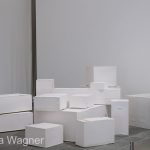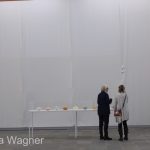Die Rachel Whiteread Ausstellung im Belvedere 21, dem ehemaligen 20-er Haus. Man kennt das Denkmal für die Opfer des Holocaust am Judenplatz, aber mehr schon nicht – im Allgemeinen.
Das Museum verschwindet fast neben all den neuen Bauten am Gelände des Hauptbahnhofs. Die Umgebung ist trist – leider. Und Radständer vor dem Museum gibt es auch keinen.
Innen ist das Museum sehr “clean” und angenehm. Den folder für die Rachel Whiteread-Ausstellung lese ich nicht schon vorher. Selber die Dinge auf sich wirken lassen ist mir lieber, den folder kann ich noch immer lesen.
Die “objects” sind grosszügig im Raum verteilt. Sie wecken Interesse ob ihrer Einfachheit ( weniger ist ja immer mehr) und man tritt näher und schaut. Manches erschliesst sich einem nicht, aber Vieles, sehr Vieles hat einen touch von Melancholie, verlassene Räume, Schubladen, Gegenstände an die Wand gelehnt, als sei man grad am Übersiedeln (oder wird delogiert). Matratzen, auf denen man nicht rasend gut liegt, die aber für manche eben sehr viel bedeuten können. Etwa für die “homeless people” (steht so im folder…)
Insgesamt eine Ausstellung, die einen zum Denken in anderen als den gewohnten Mustern zwingt, wenn man will.
Rachel Whiteread, British artist, born 1963.
Known in Vienna for her Judenplatz Holocaust Memorial, the Belvedere is featuring part of her artwork at the Belvedere 21, its wing for contemporary art.
My first impression when entering the big hall with the artist’s work was: white. White walls as well as primarily white sculptures, big and small .
Not having read the little booklet handed to me along with the ticket, I wander through the big hall, soaking up the atmosphere. Ready to let my own thoughts come to the surface.
There is a slight melancholy about the artwork, and a tenderness too.
Planks, remains from bookshelves, cupboards with drawers opened spread out across the floor. All white and clean. And yet, it speaks about leaving something behind. Perhaps being forced to leave. For whatever reason.
Doors, made of pastel colored glass, lined up against a wall force you to stand still and wait. For a story of somebody opening a door, perhaps, or closing the door and leaving forever.
Hot water bottles, colorful and made of different materials make you wonder, whether they all can still warm up something or somebody.
“Less is more”. Definitely, when it comes to this artwork of ordinary things, which invites you follow the artist to yet unknown territory.
© 2018, admin. All rights reserved.
